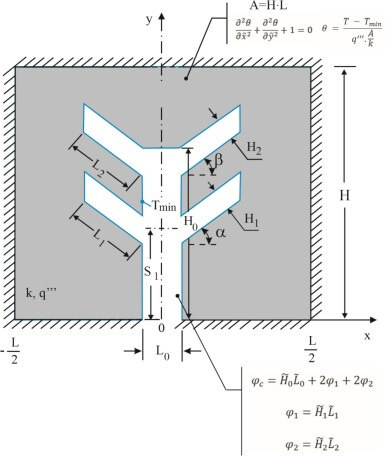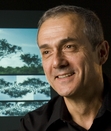Adrian Bejan's Blog, page 7
February 2, 2025
Adrian Bejan I Imperfection, from Design in Nature
In this video, Adrian Bejan discusses the concept of imperfection in design, particularly in thermodynamics, fluid mechanics, and heat transfer. Unlike the ideal Carnot engine, he explains how all real engines are inherently imperfect due to energy losses. Bejan highlights that imperfection is the difference between the theoretical maximum work output and what is practically achievable. He also connects this concept to fluid dynamics, explaining how resistance in ducts and pipes leads to inefficiencies and heat transfer, where temperature gradients cause irreversible energy dissipation. Throughout the talk, Bejan emphasizes a holistic engineering approach, advocating for understanding systems as interconnected rather than isolated components.
February 1, 2025
Exciting Updates from the Constructal Community!
Dear all,
The Constructal Newsletter is expanding rapidly, reaching 410 members—and counting! Similarly, the Constructal YouTube Channel has grown to 930 members.
From now on, in addition to YouTube videos, I will be sharing some insightful papers and news with you. Please stay tuned for some interesting content on Constructal Law and its applications. I hope you find it inspiring!
Let’s keep building and sharing knowledge! 🚀✨
---
Umit Gunes, Ph.D.
umitgunes.com
by Adeel Arshad
 Fig. 1. (a) A cross-sectional view of a PCM-based tree-shaped constructal design heat sink and (b) different cases of tree-shaped constructal design structural fins
Fig. 1. (a) A cross-sectional view of a PCM-based tree-shaped constructal design heat sink and (b) different cases of tree-shaped constructal design structural finsThis study explores the application of constructal law in designing tree-shaped heat sinks with phase change material (PCM) for miniaturized electronics. A novel structural fin design with varying volume fractions (0%, 10%, 20%) and fin heights (0–20 mm) is analyzed under constant heat input using RT-35HC PCM. Results show that fin height and the number of branches primarily influence heat transfer efficiency. At a 20% volume fraction, the extended surface structure lowers the heat sink temperature by ~8% and increases operational time by over 1%. Higher fins (up to 20 mm) delay reaching the critical temperature, while Nusselt number analysis highlights dominant natural convection during melting. The study concludes that a fin height of 20 mm and a 10% PCM volume fraction provide optimal passive cooling performance for miniaturized electronics.
Geometrical optimization of an isothermal double Y-shaped cavity employing differential evolution algorithm with a constructal approachby Gill Velleda Gonzales, Cesare Biserni, Luiz Alberto Oliveira Rocha, Emanuel da Silva Diaz Estrada, Liércio André Isoldi, Antônio José da Silva Neto, Elizaldo Domingues dos Santos a
 Fig. 1. Computational domain of the cavity in form of double Y intruded into a rectangular heat generating solid wall.
Fig. 1. Computational domain of the cavity in form of double Y intruded into a rectangular heat generating solid wall.This study applies constructal design (CD) to optimize a complex isothermal double-Y-cavity for cooling a heat-generating rectangular solid. The goal is to minimize maximum temperature excess while considering four constraints and seven degrees of freedom (DOF), offering greater flexibility than previous cavity designs. Optimization is conducted using exhaustive search (ES) and differential evolution (DE) from the fourth DOF onward. For square solids, optimal designs emerge when cavity branches stretch across the solid, distributing heat more evenly, aligning with the optimal distribution of imperfections principle. Performance analysis shows that the double-Y cavity outperforms I-, T-, Y-, X-, double-T-, and H-cavities by 25% to 82% but is 1% less effective than the ψ configuration. The cavity transitions to double-T or I configurations for different height/length (H/L) ratios, demonstrating how constraints influence optimal cooling design.
January 28, 2025
Adrian Bejan I Asymptotes, Aristotle & Engines, from Design in Nature
In this lecture, Adrian Bejan explores the concept of fundamentals in science and design and contrasts it with reductionism. Using the Atlanta airport as a case study, he discusses the importance of understanding asymptotes in designing efficient systems. Bejan also emphasizes the interconnectedness of various scientific disciplines through the lens of flows and imperfection, advocating for a holistic understanding of nature and engineering principles.
---
Umit Gunes, Ph.D.
Assoc. Prof., Yildiz Technical University
umitgunes.com
January 26, 2025
15th Constructal Law Conference - Design in Nature and Society

The 15th Constructal Law Conference, “Design in Nature and Society” will be held at Florida International University, Miami FL, USA, on November 5-7, 2025. The Constructal Law governs all phenomena regarding design evolution in Nature, bio and non-bio, human-made and not human-made. The conference explores diverse areas such as:
The physics of life
Design in nature
Evolutionary design with freedom
Evolution: geophysical, biological, social, technological, communications, science, literature, city, government, climate
Thermodynamics, energy, power, and economy
Thermoeconomics, bioeconomy, and circular economy
Information, complexity, change, time arrow
Human beings as part of nature
Hierarchy, power laws, inequality, innovation
Living and non-living from the same point of view
Natural and social sciences together
Art and science together
Predicting evolution
More details about the conference will be available soon…
January 25, 2025
Adrian Bejan I Altruistic & Egotistic Design, from Design in Nature
In this lecture, Adrian Bejan presents the principles of design evolution through the lens of human infrastructure, explicitly focusing on airport design as a case study. He explores the necessity of access and efficiency in human settlements, contrasting altruistic design principles—prioritizing the needs of the least advantaged travelers—with egotistic designs that consider individual perspectives. Through mathematical analysis, he demonstrates how the best designs emerge naturally, benefiting the entire population while balancing individual needs.
Umit Gunes, Ph.D.
Assoc. Prof., Yildiz Technical University
January 17, 2025
Adrian Bejan I Evolution, Freedom, Access, from Design in Nature
In this video, Adrian Bejan discusses the interconnectedness of various scientific disciplines, emphasizing the importance of fundamentals in education and understanding design in nature. He explains concepts like thermodynamics, mechanics, and holism and advocates for a broad view of knowledge that integrates these disciplines. The video also explores design principles in nature and society, highlighting evolution, freedom, and access.
January 5, 2025
January 2, 2025
Adrian Bejan I Science history, from Convection
In this video, Adrian Bejan discusses the concepts of momentum transfer and thermal resistance to explain the evolution of boundary layer theory in fluid mechanics and heat transfer. He emphasizes the importance of understanding the historical development of scientific ideas, highlighting how knowledge evolves and how historical awareness can empower individuals in various fields.
December 30, 2024
Adrian Bejan I Similarity method, from Convection
In this video, Adrian Bejan introduces the similarity method in convection and boundary layer theory. He discusses the properties of velocity profiles in fluid mechanics, emphasizing the use of the stream function and the concept of similarity in analyzing flow fields. The video delves into the historical context of these theories, the derivation of the governing equations, and the significance of boundary conditions in solving these equations.
December 22, 2024
Adrian Bejan I Ethics, from Convection
In this video, Adrian Bejan discusses the ethics of scientific publishing, focusing on the distinction between original ideas and remakes of existing ideas. He critiques the modern trend where researchers often publish work that lacks proper acknowledgment of prior sources, highlighting how visuals can reflect the originality of ideas.



